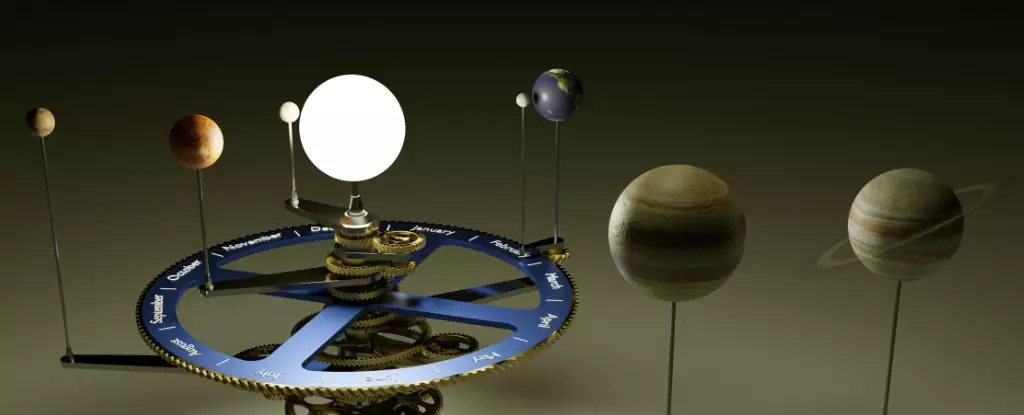As we dive into the celestial tapestry of our universe, this period offers an exceptional opportunity for astronomy enthusiasts and casual sky watchers alike. January heralded a unique occasion where several planets in our solar system aligned, drawing attention to the night sky. However, amidst the excitement surrounding this celestial line-up, Mercury remained elusive—until now. The arrival of Mercury into the evening sky serves as a reminder of the dynamic nature of our solar system and the joys of night sky observation.
The Return of Mercury: A Challenge Worth Facing
Fresh from a solar conjunction on February 9, Mercury is now gracing the western horizon at dusk. This tiny planet is notoriously tricky to spot, often playing hide-and-seek behind the brilliance of the Sun. Yet, as it returns from its solar hideaway, enthusiasts have a rare chance to check Mercury off their bucket lists. A fantastic way to locate the swift planet is by using Venus as a guide. As Mercury glides through the twilight, it is expected to pass very close to Saturn on February 25, creating a celestial conjunction that should not be missed.
For the eager sky observer, the next few days are pivotal. At dusk on March 1, the crescent Moon will occult Mercury for viewers in Hawaii and across the Pacific, an exciting event that underscores how fleeting moments in the sky can be. And on March 8, Mercury will reach its greatest elongation, positioning itself 18 degrees east of the Sun—a brilliant sight for telescope users.
The Dance of Venus and Mars: A Spectacle
While Mercury is stealing the spotlight, it won’t be alone in the sky. Venus, often referred to as the “Morning Star,” is set for a spectacular performance alongside the crescent Moon on March 2. Historically, Venus has captivated observers, including attendees of Abraham Lincoln’s second inauguration, who spotted the dazzling planet shining bright even at midday.
Let’s not forget about Mars, which, high in the east, is a prominent figure in the night sky. Following its opposition on January 16, Mars continues to shine with a pleasing ruddy hue. Observers should look out for a beautiful conjunction of the waxing gibbous Moon with Mars on March 9, providing yet another opportunity for an awe-inspiring night sky experience.
As we venture further into our solar system, the majestic giants—Jupiter and Saturn—await our gaze. Jupiter, high in the constellation Taurus, shines bright and amply on the evening horizon. The planet will meet the Moon on March 6, making for a thrilling visual pairing. Jupiter’s place in history is rooted in the meticulous observations made by Danish astronomer Ole Rømer, whose studies shed light on the significant effects of light’s travel time in astronomy.
Saturn, though lower in the sky and a bit more challenging to spot, should not be overlooked. After catching a glimpse of Mercury, viewers can sweep their binoculars across the horizon to find Saturn, faintly glowing at a +1.1 magnitude. As the rings of Saturn edge closer to alignment from Earth’s perspective on March 23, the observant will be rewarded with a view that is both rare and breathtaking.
Though often overshadowed by their gaseous cousins, the ice giants Neptune and Uranus present a unique observational challenge during this timeframe. Uranus, with a +5.8 magnitude brightness, makes for an achievable binocular target in Taurus, while Neptune, fainter at +7.8 magnitude, lies low on the horizon in the constellation Pisces. Discoveries of these distant planets in the telescopic era remind us of the powerful union of observation and mathematics that has shaped our understanding of the cosmos.
As we transition from February into March, the planets will continue their dance, with Mercury and Venus preparing to reemerge into the dawn sky, leaving Saturn behind. April promises to be equally thrilling with the onset of the eclipse season, beginning with a partial solar eclipse on March 29 and a total lunar eclipse shortly thereafter.
As we prepare for these celestial events, it’s essential to remember that many encounters with the universe require patience and keen observation. Whether you are a seasoned astronomer or a casual observer, the night sky offers a ceaseless source of wonder and discovery. Equip yourself with your telescope or binoculars and embrace the beauty above; the cosmos awaits. Happy stargazing!


Leave a Reply